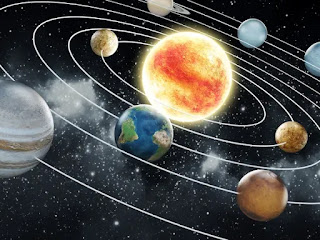Celestial and Orbital Order
Celestial and Orbital Order
Since the pre-Socratic era, there has been obsession with celestial bodies and their movements in space. Philosophers such as Plato and Aristotle propounded the geocentric astronomical model. Geocentrism was the prevailing astronomical postulation, and the theory was based on the Earth being orbited by the Sun, Moon, stars and planets. A popular proponent from the geocentric era was Ptolemy and the Ptolemaic system was that the Earth was at the centre of the universe and other celestial bodies – planets, stars, and the Sun – revolved around Earth. Notably, around the 13th century, some astronomers critiqued the Ptolemaic astronomical model, and they were mainly from the Maragheh Observatory in Persia. Prominent among the astronomers were Nasir Al-Din al-Tusi and Al-Urdi. This research phase effectively buried the geocentric astronomical model and laid the foundation for what was to be known as the heliocentric astronomical model around the 16th century.
Heliocentrism postulates the Earth and planets revolving around a centric Sun. There have been various proponents of the heliocentric-oriented model, such as Nicholas Copernicus, Giordano Bruno, and Galileo Galilei. Whilst Copernicus popularized Heliocentrism through his heliocentric theory of planetary motion during his era, Bruno and Galileo literally paid with their lives for espousing related cosmological theories in their respective eras. In the case of Bruno, the Church – Roman Inquisition – accused him of heresy and he was executed by burning at the stake. On his part, the Roman Inquisition sentenced Galileo to house imprisonment until his death in 1677.
Hypothetically, some exposure to Islamic exegeses in the West, particularly the clergy, could have saved the lives of some brilliant minds. The Quran mentions a related concept of rotational celestial bodies. Celestial bodies are mentioned as moving in their respective orbit, based on an established celestial order:
It is not for the sun to catch up with the moon, nor does the night outrun the day. Each is travelling in an orbit of their own. – Quran 36:40
The Earth's rotational speed varies and is dependent on some factors such as its molten core, oceans, atmosphere and other celestial bodies. The time Earth takes to rotate on its axis is 24 hours and to revolve around the sun it takes 364.25 days. Also, the Earth rotates once in about 24 hours in relation to the Sun. The Sun rotates around its axis in 27 days, though this calculation is dependent on latitude. Whilst the average rotation is 27 days, around the sun's equatorial regions, the rotation takes about 25 days and 38 days at the poles. The moon's orbital movements are not visible from Earth because synchronized rotation makes it appear static. The moon orbits the Earth via an elliptical path – lunar perigee and apogee. The moon rotates around its axis and completes a revolution around the Earth in about 27 days. Also, it takes the moon 29.5 days to complete a full lunar cycle. The moon completes a cycle every month, whilst the sun completes a cycle in a year. The Quran mentions the rotation of the sun and the moon in relation to the Earth's rotation – alternation of night and day:
He wraps the night around the day, and wraps the day around the night. And He has subjected the sun and the moon, each orbiting for an appointed term. – Quran 39:5
Contextually, the 'wraps' in the above Ayah represents a rotational movement.
In practical terms, when you wrap two items around each other, a rotational motion is produced. Also, in some translations of the Quran, the word wrap is substituted with other words, such as 'roll' and 'overlap', which are all signifying various forms of rotation.
And He is the One Who created the day and the night, the sun and the moon—each travelling in an orbit. – Quran 21:33
Excerpt from pgs 278-280 of P.R.I.S.M: Primal Religious Instruction Serving Mankind by M.B.O Owolowo ©️




Comments
Post a Comment